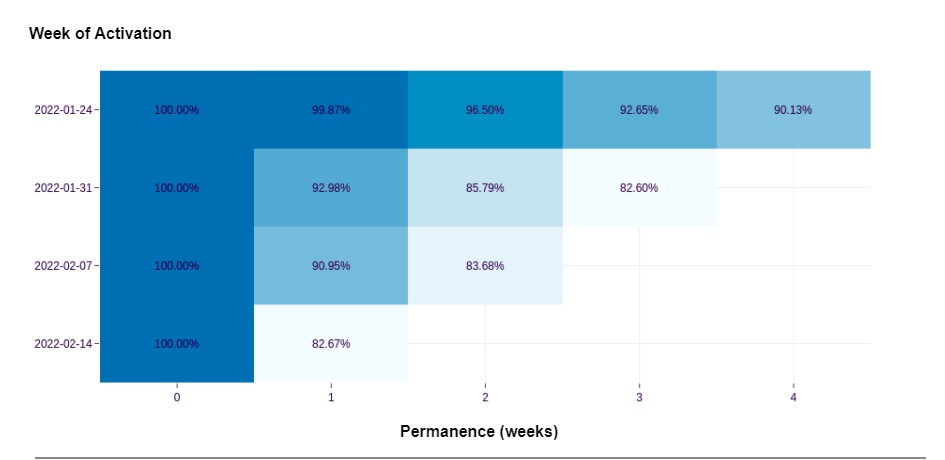What is a cohort?
A cohort is a group of users who share a common characteristic. The use of cohorts facilitates the analysis of user behavior without the need to look at each customer one by one.
In the indigitall cohorts you will find your users grouped by the week in which they subscribed to receive push notifications.
The cohort defined by weekly acquisitions will be similar to:

What are cohorts for?
Analyzing users in cohorts allows us to find out if early unsubscribes are occurring, how product/business changes impact churn (negative or positive) and how each cohort affects revenue.
How to read a cohort analysis chart
If you're new to cohort charts, you'll find that they're pretty easy to read once you're familiar with them.
Here's a quick overview of what our cohort charts look like on indigitall.
First, let's look at just one cohort.

From right to left, you are seeing:
2022-01-24: This is the "cohort", users who receive push notifications since the week that began on Monday, January 24, 2022.
99.87%: This is the percentage of customers who stayed within the following week. 0.13% of users unsubscribed from receiving push notifications within a week of signing up.
Each subsequent column shows the percentage of customers remaining in that cohort after each week. So, in column "2", we can see that 96.50% of the original users stay after their first week, and so on.
Colors also help us identify what is happening. Darker colors represent the highest percentages; the lighter represents the lowest.
And this would look like the complete graph with which to compare four different cohorts:
How to Use Cohort Analytics to Reduce Churn and Increase User Retention
To determine if cohort behavior is stable, worsening or improving you simply have to compare the values by column.
For example, in the graph above we can see the users who signed up for notifications in the week of January 24 (the first cohort or first row) and, after two weeks, 96.50% wanted to continue receiving pushes. Instead, this figure drops to 83.68% in users who registered in the week of February 7 (the third cohort or third row).
An early detection of churn will allow us to take measures to correct it. If you want to know more you can read Churn Prediction.
Updated almost 2 years ago
